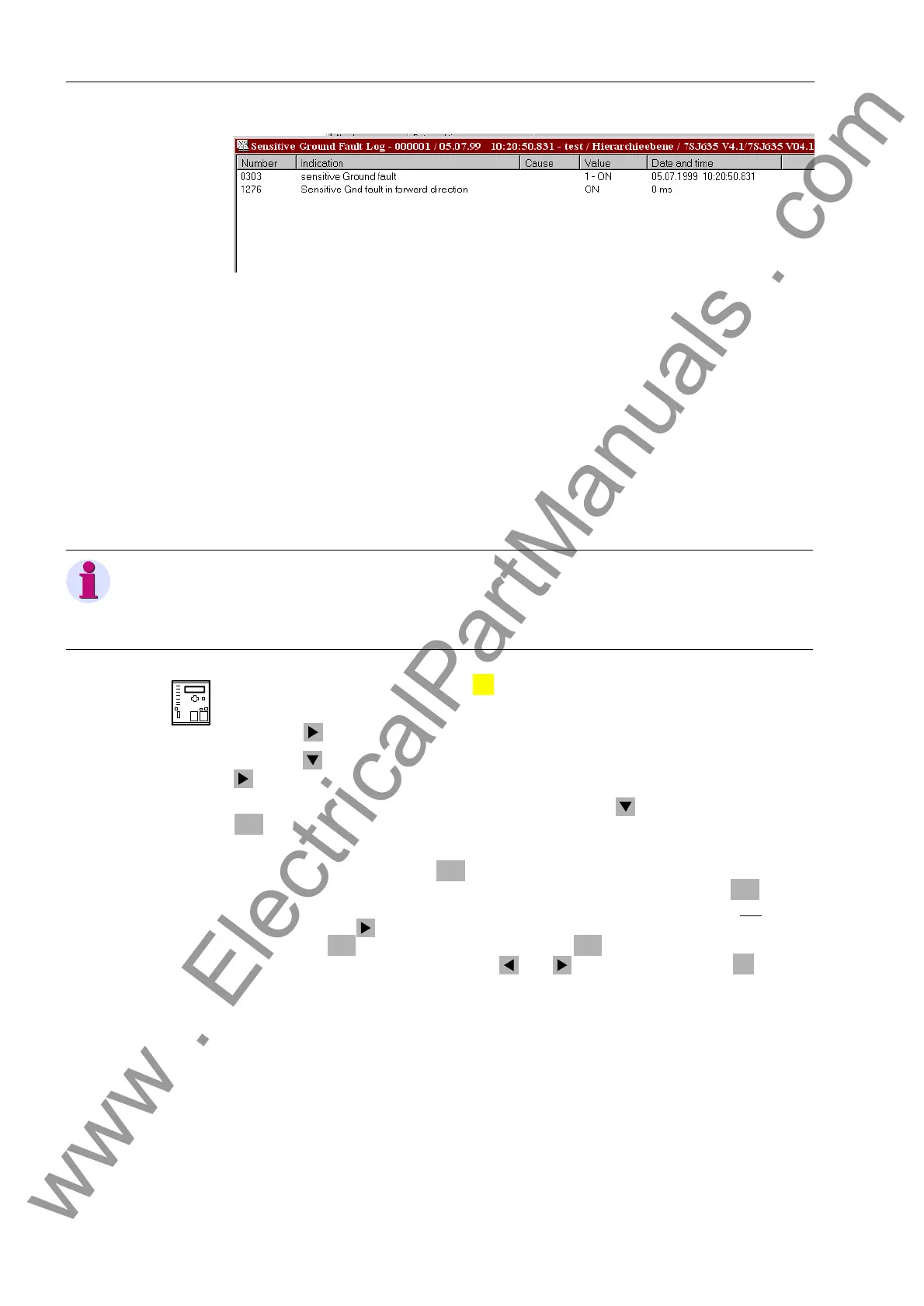Operators Tools
7-10 7SJ62 Manual
C53000-G1140-C121-1
Figure 7-12 DIGSI
®
4 Example of Indications for a Ground Fault, Ground Fault Log
7.1.1.5 Saving and Erasing the Messages
Normally, erasing the messages is not necessary because the oldest messages are
automatically erased when new events are entered, if the memory is full at the time.
However, erasure of the stored messages may be useful, for instance, after revision
or commissioning, so that in the future the memory only contains information about ac-
tual events. Erasing the memory takes place separately for each of the Fault Logs.
From the
Device Front
If erasure is desired, first press the key. The 0$,10(18 appears. The first menu
item $QQXQFLDWLRQ is marked.
Press the key to enter the $1181&,$7,21 menu (see Figure 7-1).
Using the key, select the item 6HW5HVHW, and switch to the sub-menu using the
key.
Here, select the message group to be erased using the key, and then press the
key. See Figure 7-13.
Password No. 5 (for setting changes) is required at this point. After entering the pass-
word and confirming with the key, the safety question “$UH\RXVXUH?” ap-
pears. The response “<(6” is the default (Figure 7-13). Confirm with the key, if
the message group should really be erased. If the message group should not
be
erased, press the key so that the response “12” is highlighted, and confirm this an-
swer with the key. Before confirming with the key, the responses can be tog-
gled between “<(6” and “12” using the and keys. Alternatively, the key can
be pressed to cancel the erasure procedure.
Note:
When Trip Log is erased, the fault records and counters for network fault number and
indication data number are set to zero. If, however, a fault record is erased, the
counters are unaffected.
MENU
ENTER
ENTER
ENTER
ENTER ENTER
ESC
www . ElectricalPartManuals . com

